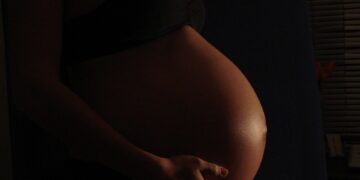The Art of Nurturing: Mastering Breastfeeding Positions for Optimal Comfort and Bonding
Breastfeeding is a beautiful and natural way for mothers to nourish their babies. It not only provides essential nutrients for the baby’s growth and development but also creates a strong bond between the mother and child. However, mastering breastfeeding positions can be a challenge for many new mothers. In this article, we will explore the art of nurturing through breastfeeding and discuss the importance of finding the right positions for optimal comfort and bonding.
Benefits of Breastfeeding
Before we delve into the different breastfeeding positions, let’s first understand the numerous benefits of breastfeeding for both the baby and the mother. Breast milk is the perfect food for babies as it is easily digestible and contains all the essential nutrients they need for healthy growth and development. Breastfeeding also provides antibodies that help protect babies from infections and diseases.
For mothers, breastfeeding can help with postpartum weight loss, reduce the risk of breast and ovarian cancer, and promote bonding with their baby. The act of breastfeeding releases hormones that help mothers relax and feel a strong connection with their child.
Choosing the Right Breastfeeding Position
There are several breastfeeding positions that mothers can try to find the most comfortable and effective one for both themselves and their baby. Each position has its own benefits and challenges, so it’s important to experiment and see which one works best for you. Here are some common breastfeeding positions:
Cradle Hold
The cradle hold is one of the most popular breastfeeding positions. To do this, sit in a comfortable chair with good back support and place your baby’s head in the crook of your arm. Your baby’s body should be facing you, and their mouth should be level with your nipple. Use pillows to support your arms and back for added comfort.
Cross-Cradle Hold
The cross-cradle hold is similar to the cradle hold but with the baby’s head supported by the opposite hand. This position can be helpful for babies who have trouble latching onto the breast properly. Use a nursing pillow to support your arms and baby’s body for added comfort.
Football Hold
The football hold is a great position for mothers who have had a cesarean section or for mothers with larger breasts. To do this, tuck your baby under your arm like a football, with their legs and body resting along your side. This position can help prevent your baby from putting pressure on your incision or breasts.
Side-Lying Hold
The side-lying hold is a comfortable position for breastfeeding in bed, especially during nighttime feedings. Lie on your side with your baby facing you, and bring them close to your breast. Use pillows to support your back and legs for added comfort.
Tips for Mastering Breastfeeding Positions
While mastering breastfeeding positions may take some practice, there are several tips that can help make the process easier and more comfortable for both you and your baby:
Get comfortable
Find a comfortable chair with good back support and use pillows to support your arms and baby’s body. Make sure you are relaxed and in a quiet environment to promote bonding with your baby.
Ensure a good latch
A good latch is essential for successful breastfeeding. Make sure your baby’s mouth is wide open and their lips are flanged out like a fish. Bring your baby close to your breast and aim your nipple towards the roof of their mouth for a deep latch.
Switch sides
Switching sides during each feeding can help prevent sore nipples and ensure that both breasts are emptied properly. Offer the second breast once your baby has finished feeding on the first side.
Stay hydrated and well-nourished
Drink plenty of water and eat a well-balanced diet to maintain your milk supply and keep yourself healthy and energized. Remember that breastfeeding burns calories, so it’s important to nourish your body with nutrient-rich foods.
Common Questions About Breastfeeding Positions
As a new mother, you may have several questions about breastfeeding positions and how to ensure optimal comfort and bonding with your baby. Here are some common questions and answers:
How do I know if my baby is latched on correctly?
A good latch is essential for successful breastfeeding. Your baby’s mouth should be wide open, with their lips flanged out like a fish. Your nipple should be aimed towards the roof of their mouth for a deep latch. You should also hear your baby swallowing and see their jaws moving rhythmically.
How often should I switch sides during feedings?
It’s recommended to switch sides during each feeding to ensure that both breasts are emptied properly and to prevent sore nipples. Offer the second breast once your baby has finished feeding on the first side. You can also keep track of which breast you fed on last to ensure equal feeding on both sides.
What should I do if breastfeeding is painful?
If breastfeeding is painful, it may indicate a poor latch or other issues. Make sure your baby is latched on correctly and seek help from a lactation consultant if needed. You can also try different breastfeeding positions to find the most comfortable one for you and your baby.
Conclusion
Mastering breastfeeding positions is an art that takes practice and patience. Finding the right position for you and your baby can help ensure optimal comfort and bonding during feeding sessions. Experiment with different positions and seek help from a lactation consultant if needed. Remember that breastfeeding is a beautiful way to nourish and connect with your baby, so enjoy this special time together.
By following these tips and guidelines, you can master breastfeeding positions for optimal comfort and bonding with your baby. Remember that breastfeeding is a unique and personal experience, so find what works best for you and your little one. Happy breastfeeding!









































